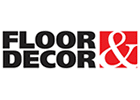By Paras Jain
In the last decade, website trends have become more dynamic, and content must be seamlessly delivered across various platforms. This makes Content Management Systems (CMS) indispensable.But with the rise of new technologies, the question arises: what does the future hold for CMS? This blog post dives into the two main contenders – headless CMS and traditional CMS – to help you understand which might be the better fit for your needs.

What is a CMS?
Think of a CMS as the engine behind your website. It allows you to create, edit, and publish content – text, images, videos, etc. – without needing coding expertise. Traditional CMS platforms typically bundle the content management functionality (back-end) with the website’s design and presentation layer (front-end). This creates a one-size-fits-all solution, which can be convenient for basic websites.
Headless CMS vs Traditional CMS: A Tale of Two Titans
The world of CMS is now witnessing a battle between two philosophies: headless CMS and traditional CMS. Here’s a breakdown of their key differences:
Headless CMS:
- Decoupled Architecture: The key feature of a headless CMS is the separation of the back-end (content management) from the front-end (presentation). This allows for greater flexibility and scalability.
- API-Driven Delivery: Headless CMS delivers content through APIs (Application Programming Interfaces). APIs act like messengers, allowing your content to be displayed on any platform – websites, mobile apps, smart TVs, you name it!
- Developer-Friendly: Headless CMS offers more freedom for developers to build custom front-ends using their preferred programming languages and frameworks. This can lead to more unique and engaging user experiences.
- Focus on Content: Headless CMS puts the focus on content management, making it easier to create, organize, and manage large amounts of content.
Traditional CMS:
- All-in-One Solution: Traditional CMS combines content management functionalities with website design templates and features. This makes them user-friendly, especially for beginners with no coding experience.
- Limited Flexibility: Since the front-end and back-end are bundled together, customization options can be limited.
- Platform-Specific: Content delivery is usually tied to the specific CMS platform, making it less adaptable for use across diverse platforms.
- Easier for Beginners: The user-friendly interface and drag-and-drop features make traditional CMS ideal for those getting started with website management.
Choosing the Right CMS for You
So, which CMS should you choose? Here are some factors to consider:
- Your Technical Expertise: If you’re comfortable with developers or have a dedicated development team, a headless CMS offers more flexibility. Traditional CMS might be a better fit if you prefer a user-friendly, all-in-one solution.
- Project Complexity: For simple websites with static content, a traditional CMS might suffice. However, for complex projects with dynamic content needs across multiple platforms, a headless CMS is the way to go.
- Scalability Needs: If you anticipate significant growth in content or website traffic, the flexibility of a headless CMS will be beneficial in the long run.
The Future of Content Management
While both headless and traditional CMS solutions have their strengths, the future seems to be leaning towards a headless approach. Here’s why:
- Omnichannel Delivery: With the rise of mobile apps, wearables, and smart devices, the need for content delivery across various platforms is crucial. Headless CMS caters perfectly to this omnichannel future.
- API Economy: APIs are becoming the norm for communication between different applications. Headless CMS, with its API-driven approach, is well-positioned to thrive in this interconnected ecosystem.
- Developer Experience: Headless CMS offers greater freedom and control for developers, leading to potentially more innovative and user-friendly experiences.
Beyond the Binary: A Hybrid Approach
It’s important to note that the battle between headless and traditional CMS might not be a zero-sum game. Some platforms are emerging as “hybrid” solutions, offering the ease of use of a traditional CMS with some of the flexibility of a headless architecture. This can be a good option for those who want a balance between user-friendliness and customization.
Conclusion
Ultimately, the best CMS for you depends on your specific needs and project requirements. Consider your technical expertise, project complexity, and future scalability needs when making your decision. Both headless and traditional CMS have their place in the digital landscape. By understanding their strengths and weaknesses, you can choose the right tool to manage your content effectively and build a website that thrives in the ever-evolving digital environment.








